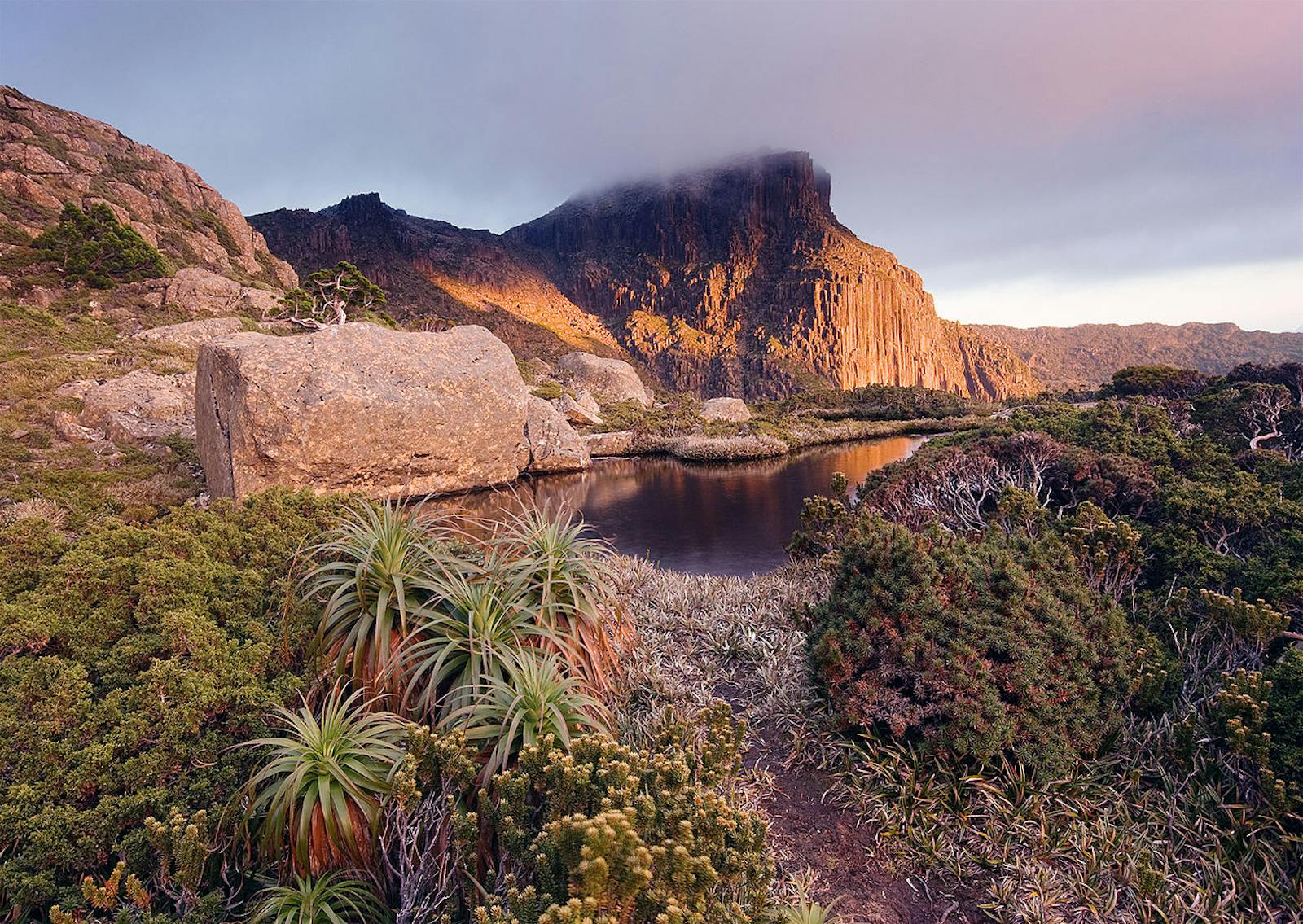Tasmanian Temperate Rainforests
The ecoregion’s land area is provided in units of 1,000 hectares. The conservation target is the Global Safety Net (GSN1) area for the given ecoregion. The protection level indicates the percentage of the GSN goal that is currently protected on a scale of 0-10. N/A means data is not available at this time.
Bioregion: East Australian Temperate Forests & Mountain Shrublands (AU3)
Realm: Australasia
Ecoregion Size (1000 ha):
3,373
Ecoregion ID:
179
Conservation Target:
79%
Protection Level:
7
States: Australia
The rainforests of western Tasmania are among the world’s oldest forests with a rich Gondwanan flora, that is, with genera and families that occurred on the ancient supercontinent of Gondwana. Vegetation may have survived here after the dinosaur-killing asteroid struck the opposite side of the planet 60 million years ago and has since been long-isolated from evolving biotas elsewhere in the world. Ancient plant genera of Nothofagus, Pseudopanax, Caltha, Aristotelia, Coprosma, and Orities still occur in the ecoregion’s wet temperate rainforests.
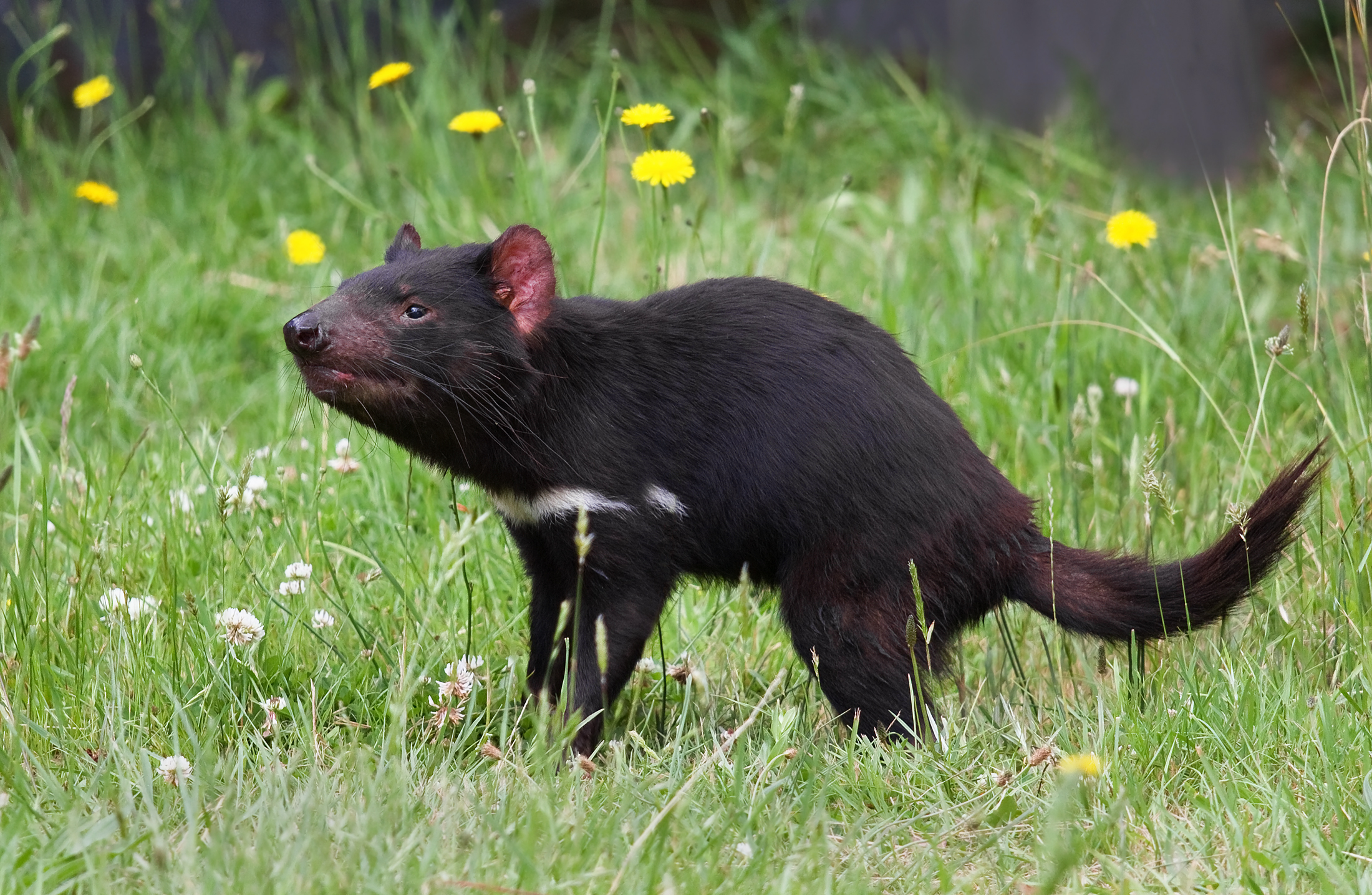
The flagship species of the * ecoregion is the Tasmanian devil. Image credit: JJ Harrison, Creative Commons
The ancient tree family, the Taxodiaceae, is represented by the King Billy pine (Athrotaxis selaginoides), pencil pine (Athrotaxis cupressoides), and the long-lived huon pine (Lagarostrobus franklinii), some greater than 2,000 years old). One of the world’s rare temperate rainforests dominates this cool, wet ecoregion. Nothofagus (primitive southern beech) species are a dominant element of both lowland and higher elevation forests.
Tree species of Atherosperma, Eucryphia, Phyllocladus, and Andopetalum are more common on less fertile soils. One extraordinary tree, Eucalyptus regnans, is the world’s tallest flowering plant at over 100 m. Unusual species include Australia’s only winter-deciduous tree, Nothofagus gunnii, myrtle beech (N. cunninghamii), sassafras (Atherosperma moschatum), King Billy pine, pencil pine, horizontal (Anodopetalum biglandulosum), Huon pine, celery-top pine (Phyllocladus asplenifolius), and chestnut pine (Diselma archeri).
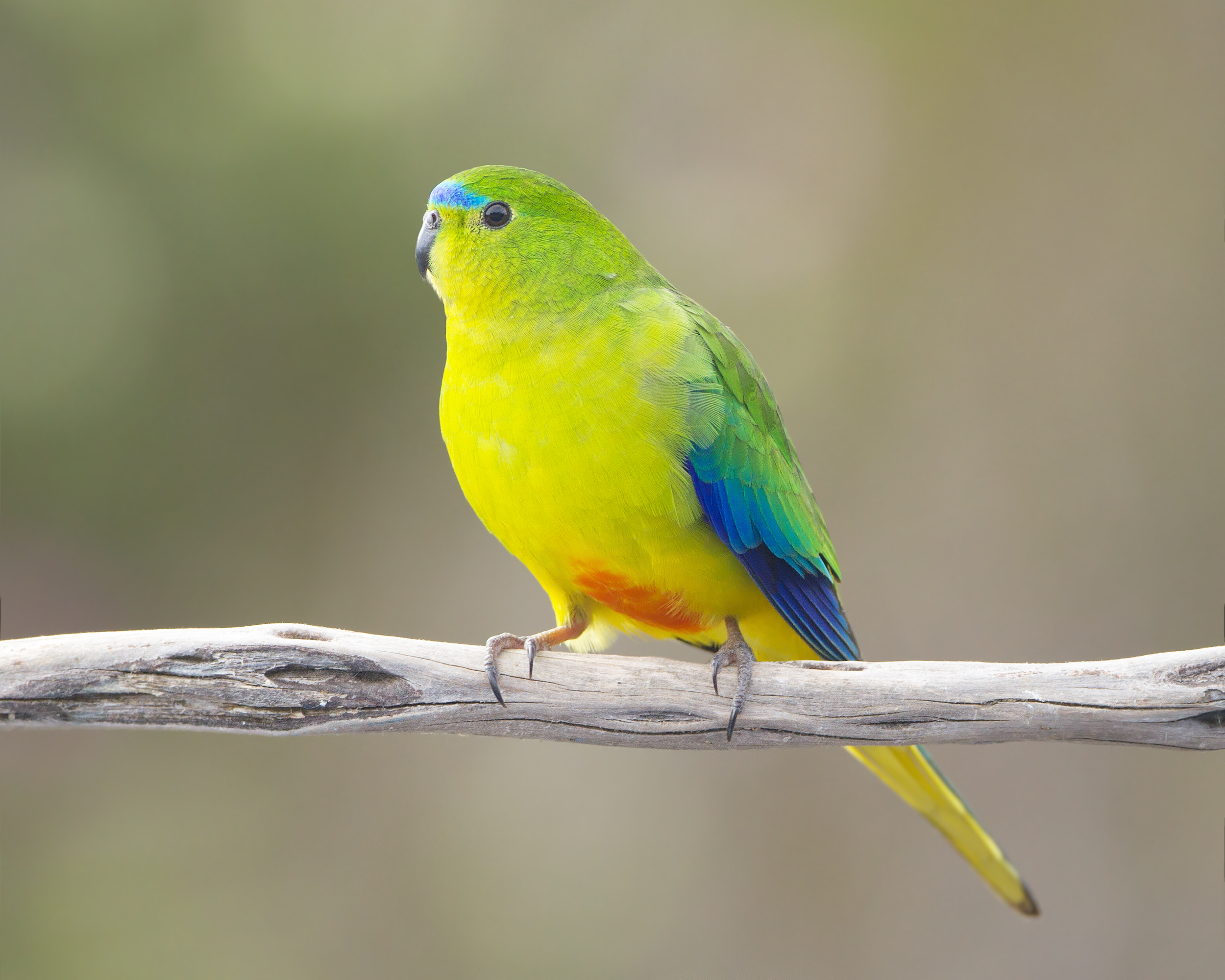
Orange-bellied parrot. Image credit: JJ Harrison, Creative Commons
Rainforest is dominant, though frequently burned areas shift to mature eucalypts with a tall understory of Acacia, Olearia, Bedfordia, Pomaderris, and Phebalium. Other vegetation types include wet sclerophyll forest, buttongrass moorlands, alpine vegetation, scrub, and heath. Over 700 species of vascular plants have been recorded and roughly 300 largely epiphytic lichens. Plant endemism is high with around 240 species, particularly in formerly glaciated areas.
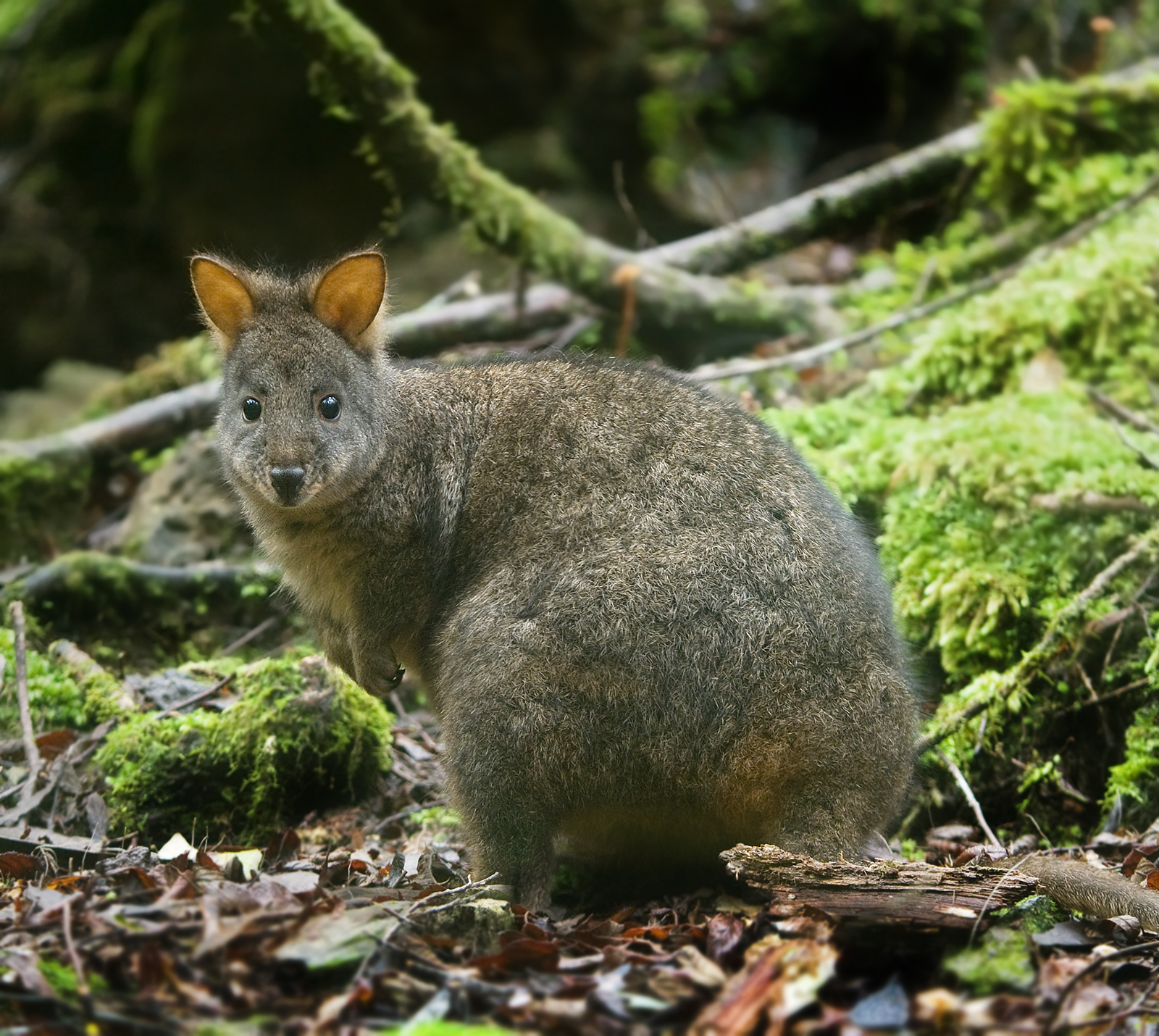
Tasmanian pademelon. Image credit: JJ Harrison, Creative Commons
Mammals of the rainforest include the ringtail possum (Pseudocheirus peregrinus), spotted-tailed quoll (Dasyurus maculatus), dusky antechinus (Antechinus swainsonii), Tasmanian devil (Sarcophilus harrisii), Tasmanian long-tailed mouse (Pseudomys higginsi), and Tasmanian pademelon (Thylogale billardierii). Green rosella (Platycercus caledonicus), olive whistler (Pachycephala olivacea), black currawong (Strepera fuliginosa), and orange-bellied parrot (Neophema chrysogaster) are native birds. The latter is critically endangered. During winter, it flies to mainland Australia and returns in summer to breed in coastal southwest Tasmania.
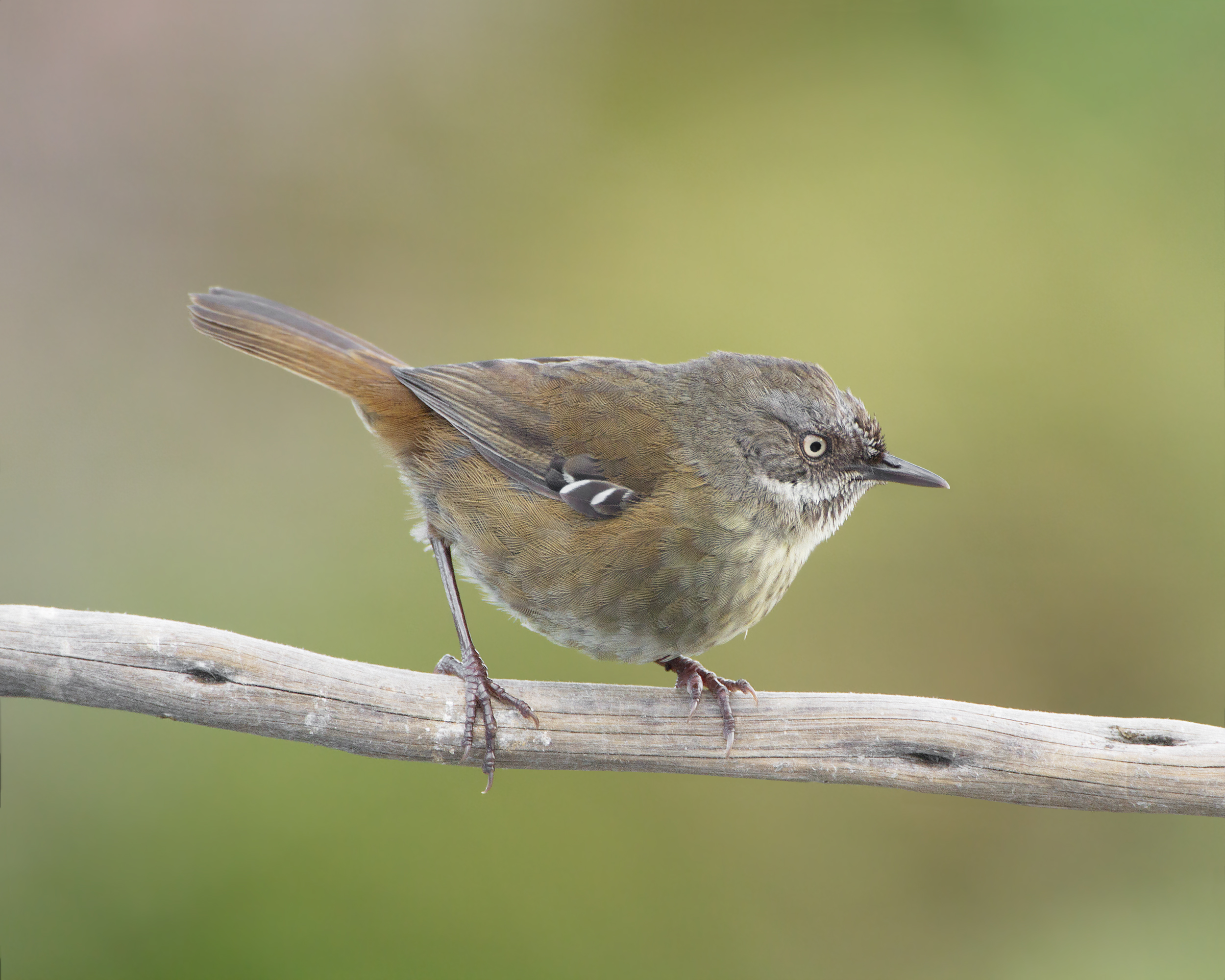
Tasmanian scrubwren. Image credit: JJ Harrison, Creative Commons
The endemic monotypic moss froglet (Crinia nimbus) inhabits lowland rainforest. The Pedra Branca skink (Niveoscinus palfreymani) occurs only on the tiny, offshore Pedra Branca Island. Several ancient invertebrates occur here, including the giant velvet worm (Tasmanipatus barretti), northwest velvet worm (Ooperipatellus cryptus), and Hickman’s mountain shrimp (Allanaspides hickmani). The Tasmanian giant freshwater crayfish (Astacopsis gouldi) inhabits streams in the north of the ecoregion and is the largest freshwater invertebrate and crayfish in the world.
-CC-2014.jpg)
Grey goshawk. Image credit: Creative Commons
The 13,800 km2 Tasmanian Wilderness World Heritage Site protects rainforest in around 40% of its area. Frequent wildfires and logging have disturbed large areas. Roughly 58% of all remaining rainforest is protected in conservation areas, though wet eucalyptus forests are poorly represented. Only six of 38 habitat types are well represented in the protected area system. Plant diseases like myrtle wilt and Phytophtora cinnamomic threaten native vegetation. Logging and mining threaten many important conservation areas.
The key conservation actions for the next decade are to: 1) expand the protected area network to incorporate all 38 habitat types and all late-seral stage vegetation; 2) phase out logging and ban mining in the Tarkine region; and 3) strengthen species recovery programs for the Tasmanian devil, orange-bellied parrot, and several other critically endangered plants and animals.
Citations
1. Department of the Environment (2015). Conservation Management Zones of Australia, Tasmanian Temperate Rainforests and Highland Forests. [online] Environment.gov.au. Available at: http://www.environment.gov.au/system/files/resources/71f85f2d-3ad9-45ff-a52c-71d87248d1c6/files/cmz-tasmanian-temperate-rainforests-highland-forests.pdf [Accessed 4 Jul. 2019].
2. State of Tasmania (2010). Rainforests of Tasmania. [online] Parks.tas.gov.au. Available at: https://www.parks.tas.gov.au/file.aspx?id=16767 [Accessed 4 Jul. 2019].
3. Brown, M.J. and F.D. Podger. 1999. Conservation of Tasmania’s Natural Vegetation. Pages 381 – 400 in J.B. Reid, R. S. Hill, M. J. Brown, and M. J. Hovendon, editors. Vegatation of Tasmania. Flora of Australia Supplementary Series. No. 8. Australian Biological Resources Study, Environment Australia, Canberra.
